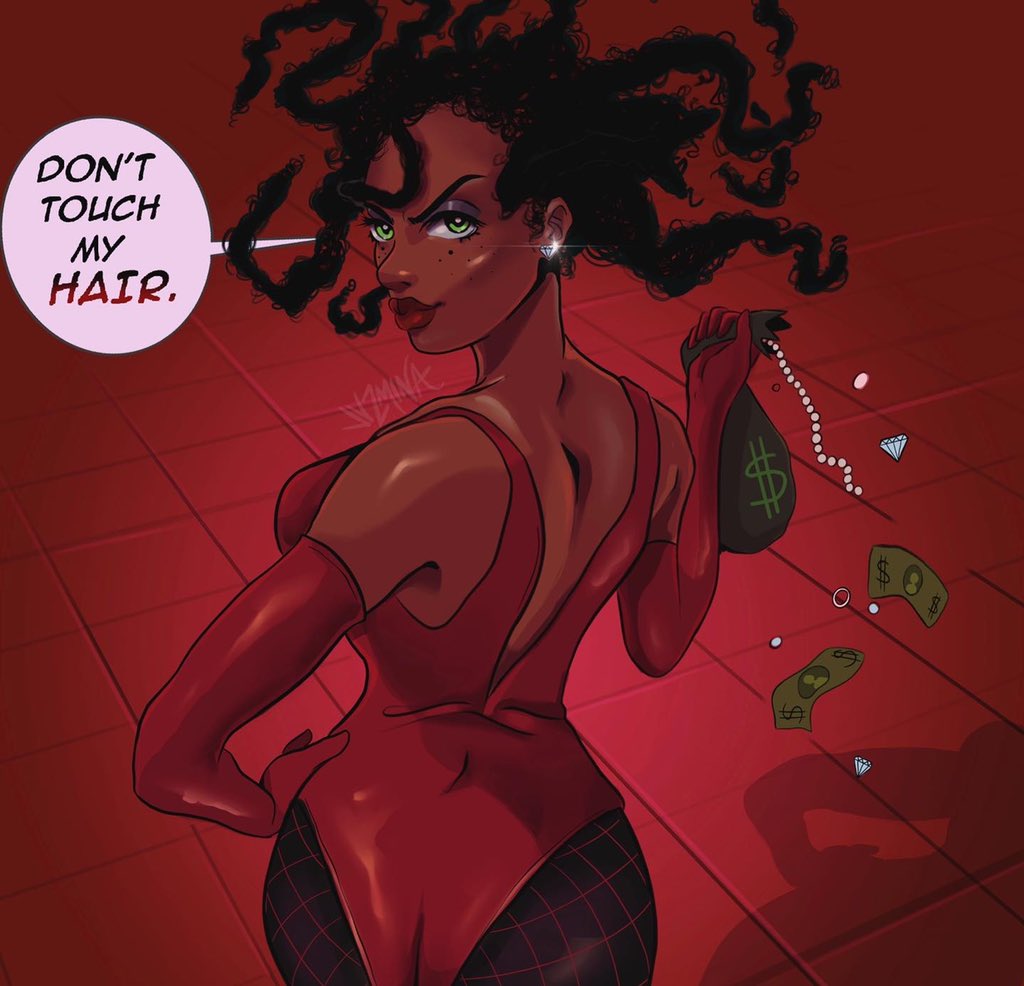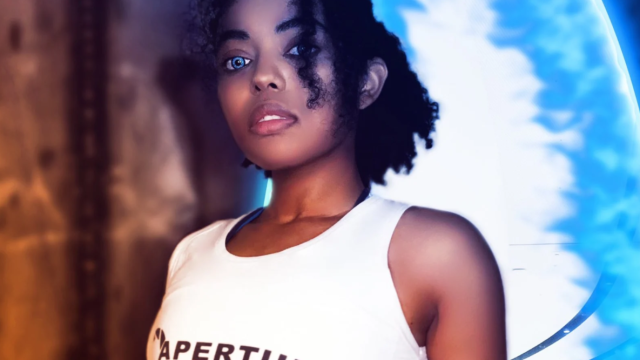One of the first works of fiction I ever wrote was for my sister. She was a big Lord of the Rings fan and had the biggest crush on Orlando Bloom’s Legolas character, so I wrote a story starring a Black elf who fell in love with him.
There were no Black people in Middle Earth (at least ones who were the “good guys” which is a whole different can of worms I haven’t the time for), so I made one for my sister. It was important to me that she see someone who looks like her in something that she loves.
The concept of Blacktober, a hashtag on Twitter, Tumblr, and Instagram) is that same feeling writ large: the desire for Black people to draw and cosplay ourselves into the things we love.
Blacktober was a hashtag created so Black artists and cosplayers could participate in a month long event celebrating our art contributions to fandom. I spoke with one of the originators of the hashtag Cel C. and got her insight into Blacktober’s creation and what it means creating Black art in predominantly non-Black spaces.

Blacktober is in some ways a reaction to racism in fandom and an effort to create a positive space. Cel C. created the hashtag in part because she they noticed “the constant harassment/targeted abusive behaviour of Black cosplayers and artists for reimagining their favourite characters into someone who looks like them in media where we are highly underrepresented.
“#Blacktober is meant to combat this with a fun, happy prompt list where people can continue to take characters they love and make them into a character they can now also relate with appearance wise.”
Some redraws of my fav Sophie and Howl moments pic.twitter.com/niFrPDPU0V
— 🅑🅞🅧🅔🅡🅑🅤🅝🥊🐰🔜FANIME 701 (@aquiboni) September 12, 2020
Blacktober’s creators also were upset by an incident this past summer when the Black artist and art instructor Alphonso Dunn claimed in a video that his new art book had been plagiarized by Jake Parker, the creator of the general art hashtag-turned-movement #inktober. (Parker has denied these claims).
The results of the Blacktober hashtag, just six days into October, have been a parade of Black artistic excellence.
This stuff is important. There were no Black people in the original Lord of the Rings film trilogy. When Peter Jackson came back for a second helping with his Hobbit movie trilogy, I have a very clear memory of gasping in a quiet movie theatre after seeing Black extras during The Desolation of Smaug. People’s heads turned. I had a similar reaction when I encountered Baranor in Middle Earth: Shadow of Mordor.
Being a Black fan in non-Black fandoms means getting excited for extras and side characters. Blacktober allows us to make ourselves the stars.
There will be the inevitable cry from critics (racists) to “make your own” or “if this were reversed…” yadda yadda. I don’t care. I’m not interested in fending off of those claims. I don’t have to explain how the situations are not the same. There is still so much work to be done before parity in representation is achieved on all fronts. Besides, this isn’t about creating parity, this is a “for us, by us” initiative to create and curate our own space to be seen. Those who disagree — eat shit.
I remember a few months back when artists on Twitter were doing the Sailor Moon challenge — taking a picture of the eponymous character and redrawing her in the artist’s own art style. I remember some of those drawings done by artists of colour re-imagining Usagi as a member of their own culture. A Desi Sailor Moon had an ornate nath and henna, while a Black one still featured Sailor Moon’s iconic ponytails but redone as long, black goddess twists. Being Black is more than shading a character’s skin brown. There’s all sorts of differences — physical and cultural — that, when added to art, make its observer feel well and truly seen.
#Blacktober #31daysofcosplay
“Uh hey Jonesy, you and grandma been talking?” pic.twitter.com/1hg9Yjmzee— Fae King Taj is Seeing TXT ♥️ (@polaristhelight) October 1, 2020
Scrolling through Blacktober characters with dreadlocks, and afros, and big, beautiful explosions of 4c hair dominate the tag, gives me the warm and fuzzy feeling of being known (as opposed to the “mortifying ordeal” feeling.)
What’s on display in this post is a tiny fraction of the art created in celebration of Blacktober (which nicely coincides with British Black History Month). The Blacktober hashtag on Twitter is a great place to start if you’re interested in seeing more.

Leave a Reply